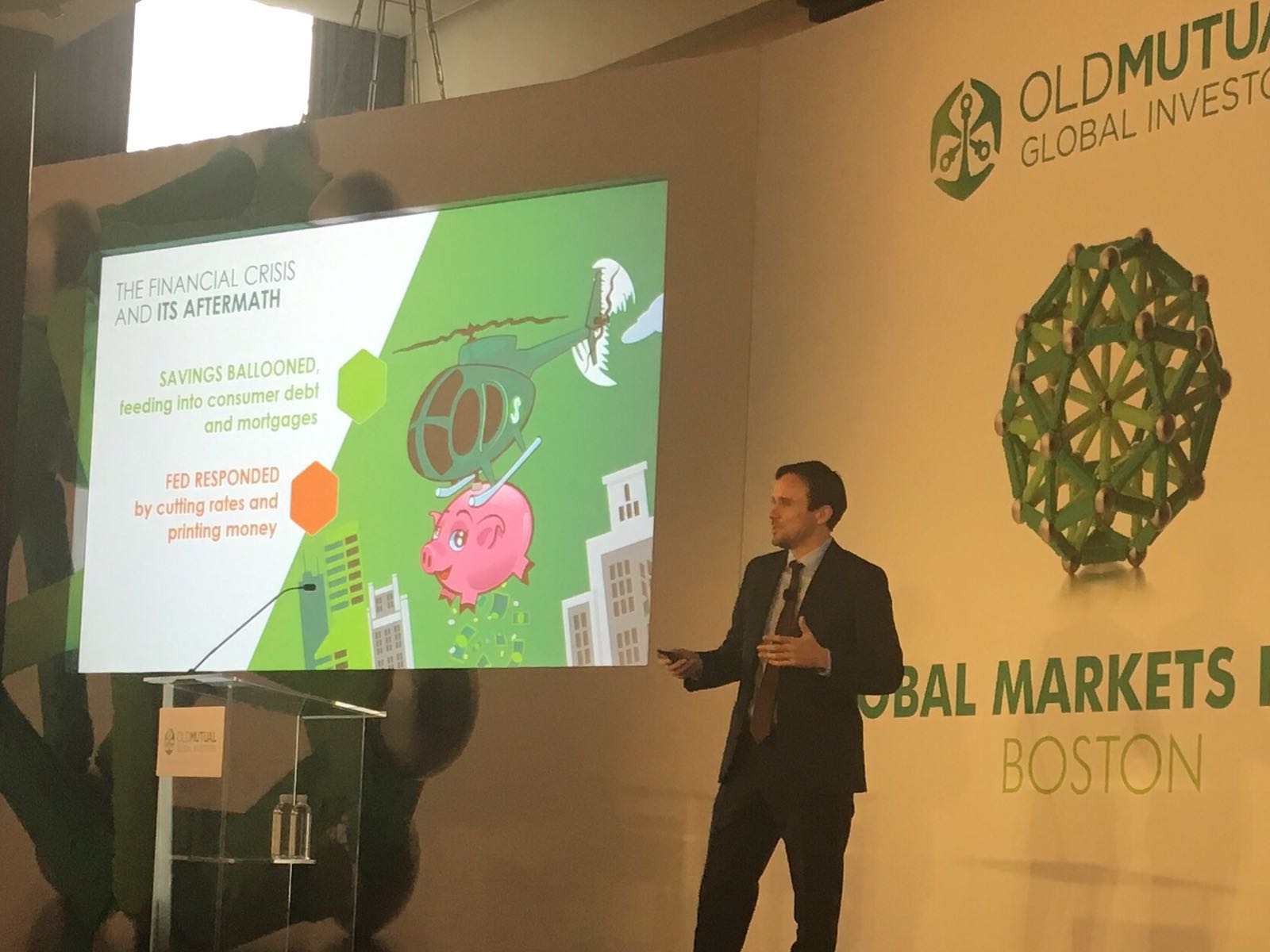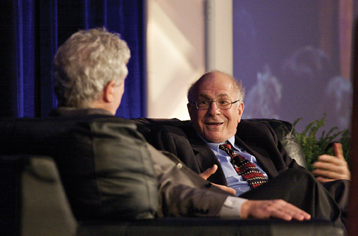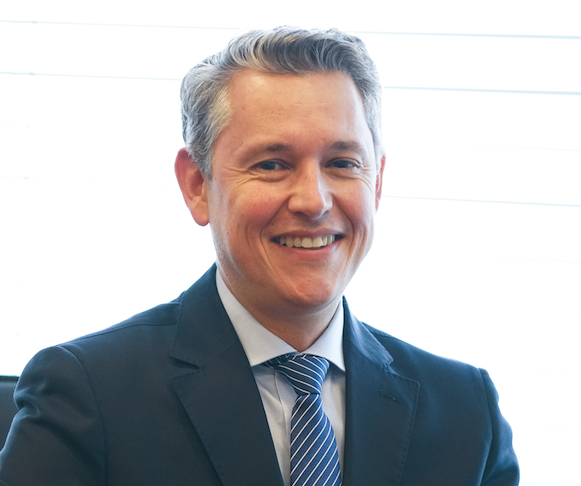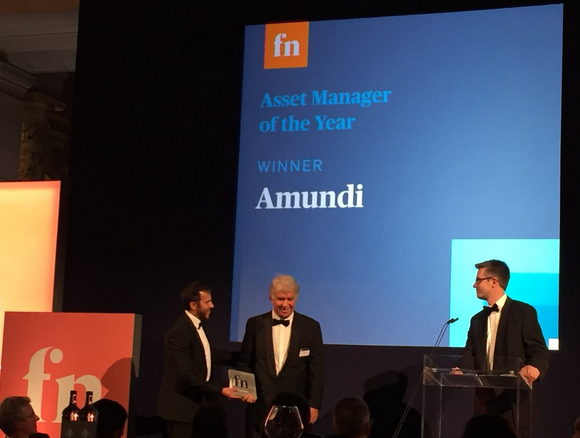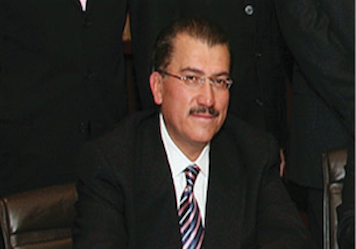Old Mutual Global Investors held its conference’s fourth edition in Boston on September 20th and 21st. This event was attended by more than 50 industry professionals from the main US Offshore business centers in the United States – Miami, New York, San Francisco, Houston, San Antonio – and major markets in Latin America – Santiago, Montevideo, Lima, and Bogota.
After a brief presentation of the agenda by Chris Stapleton, Head of Americas Distribution, Allan Macleod, Head of International Distribution, welcomed the attendees and presented the latest corporate level changes experienced by Old Mutual Global Investors (OMGI). Its parent company Old Mutual plc, is going through a process of splitting the business into four new independent units. This ‘managed separation’ which began in March 2016 is expected to be completed by the end of March 2018. Following this, Old Mutual Emerging Markets, Old Mutual Wealth, Nedbank, and OMAM, will operate separately.
Furthermore, he mentioned that OMGI’s single strategy business, will start operating as a separate entity from its multi-asset strategy business, which is distributed through Old Mutual Wealth, and which is mainly carried out in the United Kingdom. The details of the organizational structure of the new entity are still pending.
In terms of business volume, the project which began in 2012 with US$ 17.9 billion and 162 employees, and a clear inclination for the UK business – which at that time represented 95% of its client base, and with only 2 people engaged in the international distribution business, is now a reality with US$ 47.4 billion dollars in assets under management (figures at the end of Q2 2017) and 292 employees, including 22 members of the international team, with presence in London, Edinburgh, Zurich, Milan, Singapore and Hong Kong, along with Boston, Miami and Montevideo, through entities affiliated with Old Mutual.
“For the third consecutive year, our net business in terms of international clients is higher than the UK business. And, this does not mean that we are having a bad year in the UK, where we are third in the market. We are having a fantastic year, but the international side is even stronger,” he pointed out.
Among the features that distinguish Old Mutual from the competition, Macleod pointed out that OMGI is an investment-led business in which there is no chief investment officer, since each of the strategies has its own investment process, its own philosophy, and its own profit and loss account. Which is something that provides a series of benefits, the most obvious being the fact that it allows business diversification. “We have some portfolio managers who operate based on the fundamentals, others who follow a systematic approach, while certain managers base their operations only on macro factors and others only focus on stock selection. But they all have active management with a high alpha in common.”
With respect to the firm’s culture, OMGI identifies itself as a small-sized asset manager, and has the intention of remaining so, displaying an extremely flat structure, something that is reflected in the fact that both the portfolio managers and the sales representatives have remained in the firm, which is especially significant in London which has a high turnover ratio in the sector. Another key factor has been the incorporation of talent from other large firms such as Schroders, BlackRock, Invesco, with Nick Payne, Head of Emerging Global Equities, and his team being the latest recruits.
As for the Americas team, the unit went from consisting solely of Allan Macleod and Chris Stapleton, to include five other people: Andrés Munho, Head of Sales LatAm, Santiago Sacias, Regional Manager for the Southern Cone, Francisco Rubio, Sales Specialist for Americas Offshore, and Valentina Rullo and Collen Rennie, as part of the sales support team.
The Event’s Agenda
Following the introduction came the turn of the investment specialists; Mark Nash, Head of Global Bonds shared his vision on how the withdrawal of monetary stimuli by central banks will affect the global fixed-income market.
Then, Josh Crabb, Head of Asian Equities, pointed out that despite the latest rally in Asian markets, valuations remain reasonable and the probability of making money in the next 12 months is very high. In turn, Old Mutual Gold & Silver FundManager, Ned Naylor-Leyland, spoke of the return of gold to its traditional role as means of facilitating trade, particularly in the East.
Before lunch, Ian Heslop, Head of Global Equities and Justin Wells, Global Equity Investments’ Director, commented on the difficulty of predicting macroeconomic events and their effect on markets, as well as the importance of active investment in the current market.
Following the break, Paul Shanta, Manager of the Old Mutual Absolute Return Government Bond Fund, explained the opportunities created in the interest rate market and inflation after the growth spurt in Europe. In emerging markets, Nick Payne, Manager of the Old Mutual Global Emerging Markets Fund, noted that the gradual withdrawal of monetary stimulus by the Fed should not divert the course of these markets. Meanwhile, Ian Ormiston, Manager of the Old Mutual European (ex UK) Smaller Companies Fund, commented on the importance of investing in companies rather than countries in order to find opportunities in the European region.
The day was brought to a close by David Sandham, an investment writer who moderated the discussion between Ian Heslop, Mark Nash, and Ian Ormiston, where it became clear that each strategy is free to choose its own investment process and philosophy, giving differing degrees of importance to economic factors, markets or companies.
Investing with a micro or macro approach, which side wins the debate?
During his speech in the discussion panel, Mark Nash advocated the importance of macroeconomic factors for recognizing the moment for exiting the market, something that in his opinion is decisive in generating an excess return.”Macro investment will return with the withdrawal of monetary policy stimulus, as markets resume their ability to price assets, and more importantly, when divergence between different economies begins to emerge. Volatility will then return to the macro and opportunities in operations with currency and interest rates will appear. How will these movements affect the price of assets? It’s something directly related to the level of current interest rates and where they are headed. We believe asset prices will not rise, especially as long as the central banks maintain a gradual withdrawal.”
He also pointed out the importance of geopolitical events as a factor that will shape fundamentals in bond markets: “The Brexit referendum, Trump, the forthcoming elections in Italy, introduce some de-correlation in the markets, creating opportunities in macroeconomic level opportunities, at least in fixed income markets”.
However, while Ian Heslop acknowledges the importance of macroeconomic factors in the determination of asset prices, he points out that the problem lies in the lack of capacity to predict interest rate behavior and then trying to construct a portfolio based on the shape taken by the yield curve. “Our team made a conscious decision not to take that road, given the difficulty of getting it right. While we do not make explicit predictions, if we are capturing our predictions in the portfolio, we obviously do so implicitly.”
Meanwhile, Ian Ormiston commented that it is generally believed that asset prices depend on fundamentals, when in fact they depend on investment flows. In turn, the latter depend on the various bets that investors are making in the market. “There is always the possibility of market distortion at any moment, pushing prices away from fundamentals, and that is when the opportunities appear.”
Regarding whether the asset management team should have a committed relationship with the company’s management team, Ormiston again stressed the importance of knowing the corporate governance apparatus, since many opportunities for investment can be derived from this. “If we talk about the cultural differences in Europe, the culture of each company is linked to sociological factors, which although important are difficult to quantify. At OMGI, we have the opportunity to manage our portfolios as if the business was our own; we have their confidence because we have the right motivations. It is extremely important to know a CEO’s motivation. In Europe, it is quite common to find businesses managed by families, so we have to be careful when it comes to how the management is aligned with our interests. We are investors, we need to be sure that these managers will deliver credibility and sustainability, although to be fair, we must admit that the first filter is quantitative, if the characteristics of the balance are not good, the stock is not considered.”
With an opposing approach, Ian Helsop acknowledged that while the quality of the management team is an important issue to be understood, since Reg FD (Fair Disclosure) was issued by the SEC, the management team cannot provide more information than what can be extracted from the balance sheet and from the income statement. In particular, he recalls an occasion when, after having spent a lot of time and effort in preparing the questions, before he actually finished asking each question, the firm’s investor relations representative began to answer, because he already had a predetermined answer for it. However, Heslop did acknowledge that when you move down the market cap scale, a relationship with company management does become more important.
Finally, Helsop also added that his fund’s investment philosophy can be summed up as “today’s search for stocks which investors will want to buy tomorrow” and disclosed its investment methodology: “In order to invest efficiently, we have to have a good knowledge of fundamentals and information at the company level, plus a good understanding of how the macro part will affect the company. But I think there are better ways to understand a company than to perform a traditional bottom-up and top-down analysis, such as trying to understand where investors are positioned in the markets, something that later translates into the styles and themes that are used in the portfolio. This bias derives from the market, rather than having a country or sector bias drawn from macroeconomic factors.”




